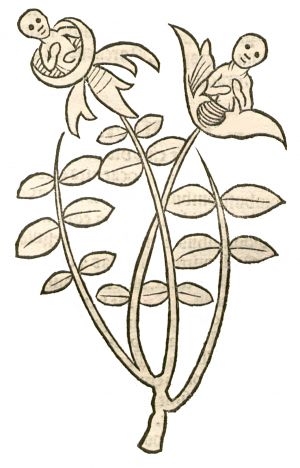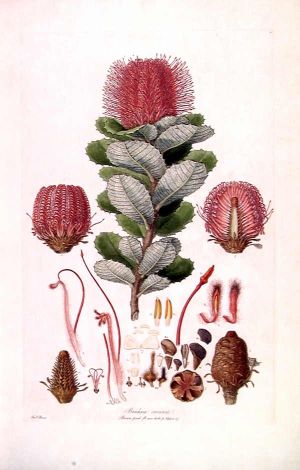Botanical Books
Botanical books bring together academic information, realistic images, and book art. This page mostly discusses botanical books from the Western world in a codex format.
History
The history of botanical books is the intersection of the history of books and the history of botany. Although plant taxonomies and different uses of plants were recorded as early as in ancient India, China, and Greece in Sanskrit hymns, medical texts, and Theophrastus's works, botanical books in a more modern sense came with the arrival of new printing technologies—such as movable type and woodcut illustrations—in the 15th and 16th centuries. Some of the first books made in this context were herbals.
Herbals

Herbals were botanical books that among the first books to be printed in Europe. At this point, plants were still studied primarily for medicinal use rather than for biological study, which meant that herbals were mostly focused on how they might be used for medicinal purposes. They often included recipes for herbal extracts and potions. Many curators of university gardens compiled classical texts such as De Materia Medica for a more complete collection of medicinal uses.
Before the 16th century, very few illustrations included in herbals were original. Many of them were copies of copies of copies, often leaning toward the mythical and away from the descriptive.
Starting from the 16th century, seminal works such as Otto Brunsfels's Herbarum Vivae Icones (1530) began to include more accurate illustrations by wood engravers. This assisted the reader in finding and identifying plants for these purposes. This tradition of accuracy was carried on by Hieronymus Bock and Leonhart Fuchs. Herbals by these scholars pushed botany closer to science through plant description, classification, and botanical illustration.
Floras
The Renaissance introduced Floras along with herbaria. "Flora" as a publicaton is often capitalized to differentiate it from "flora," which denotes the plants themselves rather than their descriptions. While herbals were primarily focused on how humans might use plants, Floras focus on plant descriptions and contextualize plants in relation to each other rather than to humans. Many floras are supported by herbaria, collections of dried plants that verify the textual information in the floras. The Sloane Herbarium is a good example: it contains volumes 1-7 of plant specimens collected on Sir Hans Sloane's voyage to Jamaica (1687-1689).
Floras serve to systematize the local plant species at a certain place during a certain time period. Since their primary focus is on identification, they often include diagnostic keys that help readers compare certain features of different specimens so that they can correctly identify the specimen at hand. There is less curation involved with Floras, since their purpose is to include all the plant life that occurs in that area.
While early Floras were written by individual authors, many modern Floras are the result of collaboration among several authors who often incorporate information from other publications.
Botanical Illustrations

Botanical illustrations have long been a part of botanical books. They evolved along with botanical books, most notably increasing in their descriptive quality as alnog with advancements in printing processes in the 18th century. Some well-known botanical illustrators of this time are Franz and Ferdinand Bauer. Even as photographs have come to accompany many printed materials, botanical illustrations have retained their value since they can incorporate characteristics from multiple specimens for an idealized overall image.
Botanical illustrations are often done in watercolor, though some may be in oils, ink, or pencil. They are produced with guidance from scientific authors.
Curtis's Botanical Magazine is a good resource for tracing the history of botanical illustrations. An academic journal published since 1787 and printing into the present day, the magazine features detailed illustrations, with many plants making their academic debut on its pages.
Modern Interfaces
Some Floras are now published digitally, with some in CD-ROMS and, most recently, on websites. Here is a list of electronic Floras. Many older botanical books have been digitized as well, including resources at the Sloane Herbarium mentioned above and at the Missouri Botanical Garden's Rare Books Collection.
Bibliography
• Herbal | Britannica
• What is a Flora?
• List of Issues – Curtis's Botanical Magazine